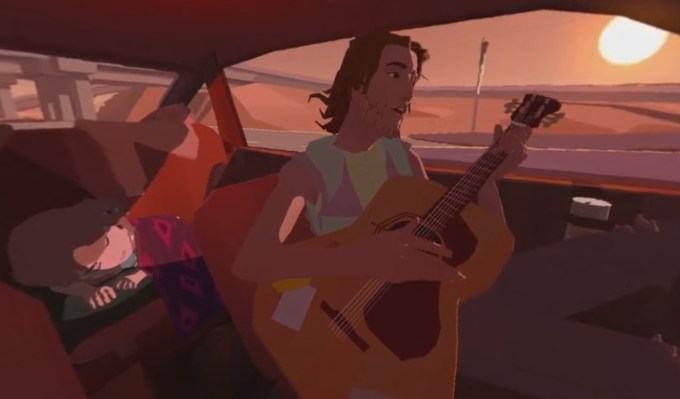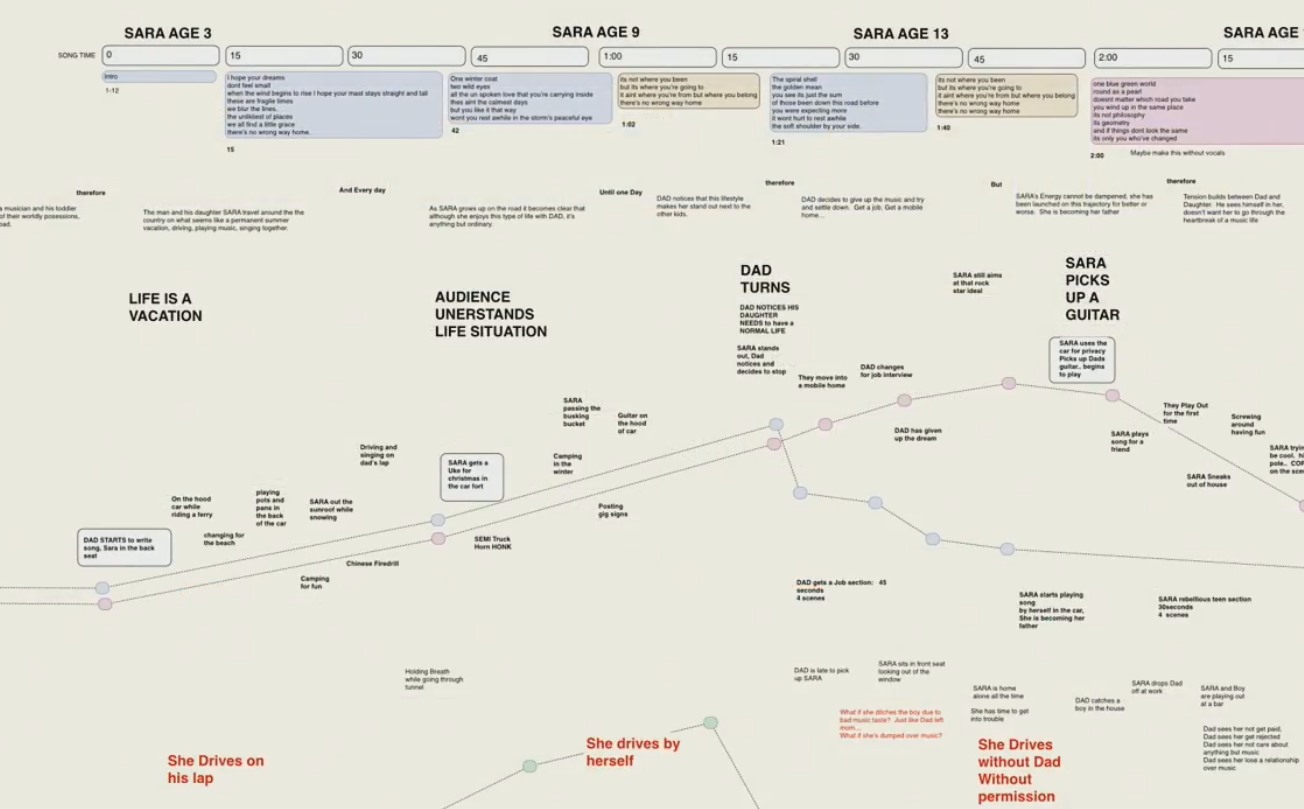It’s Friday, so you can probably spare a few minutes to watch a heartwarming little 360-degree animated film, the latest in Google’s “Spotlight Stories.” This one, entitled “Pearl,” takes place entirely inside a beat-up ’80s sedan, and traces the story of a girl and a guitar. It made its debut at the end of Google’s “Bridging the physical and digital” session at I/O today.
Directed by Patrick Osborne, an Oscar-winning animator who’s worked on a number of big recent CG films, “Pearl” has a sort of lo-fi charm to it. I was reminded of both the stylized earnestness of Life is Strange and the old-school flat-shaded rotoscoping of Flashback and Another World.
It’s no coincidence that games came to mind — “Pearl” isn’t captured in 360 the way an ordinary video is. Instead, it is an actual 3D environment being rendered in real time — in a game engine that Google’s ATAP team has reduced to less than a megabyte.
“Apparently that’s hard,” quipped Osborne on stage. His job, of course, was to craft a story, not an engine — something that can be difficult when the user can look anywhere and choose not to pay attention to what might be important story elements.
Osborne, a confessed “control freak,” decided to create a “road trip musical” and restrict the viewer to the passenger seat, from which vantage he could inconspicuously frame action by using the car’s natural geometric elements.
As with other 360-degree compositions, you might miss a few things the first time round — that’s by design, really. As Google’s Spotlight Stories tech lead Rachid El Guerrab said before introducing Osborne, this is a major challenge.
“When you’re immersed in a story, it’s all around you,” he said. “How do we tell you where to look? How do we prevent you from getting lost or missing an important part of the story?”
He showed a few techniques for guiding the user’s attention — changes in music, helper characters that bring you back the action’s focus, and so on. But the only real solution seems to be multiple viewings — and in order to accommodate that, it’s worthwhile for the director and team to make sure there’s content in all directions.
This is, of course, not every director’s preference, and what some see as advantages provided by 360 may hamper the style of others. “Pearl” seems to strike a balance between traditional and 360-degree composition — make it full screen (hit one of the high resolutions, too) and see how you like it.

